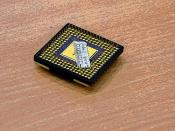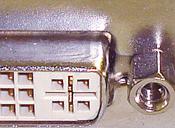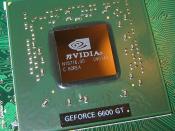Grant Paap Computer Architecture Project Fall 001 Graphic Processor Trends and Technology Introduction Computer generation of three-dimensional worlds is nothing new. A computer-generated graphic can be made with a high degree of accuracy using software methods. However, in the past ten years the need for real-time generation of graphics has pushed Central Processing Units to their maximum performance limits. Applications such as video games require the user to be immersed in a three dimensional world that is interactive. To generate this million of complex calculations have to be made on the fly and thrown up on the computer screen. Unfortunately, CPUs are made to be the jack-of all trades in a system but tend to fall short at highly specialized tasks such as this. Accordingly, 3D graphic processing units (GPUs) were invented to handle the task of rendering and displaying graphics. In the past few years, these have become as advanced as CPUs themselves.
It is not uncommon for the graphics card on a consumer level system to include its own cooling fan, large amounts of RAM, and a GPU clocked at CPU rate levels.
CPU vs. GPU GPU is a term generated by the graphics industry to describe the chip on the graphics card. In fact, it is a CPU just like the one running the computer optimized for a single task. GPUs sole reason for existence is to render virtual 3D worlds via complex animations and translate the images into a two dimensional picture presented on the computer monitor quickly enough to allow smooth animations on the computer monitor. Most GPUs are divided into two areas. One area of the chip is concerned with the creation of a 3 Dimensional reality and the other with the generation of the actual pixels that need to be displayed...


